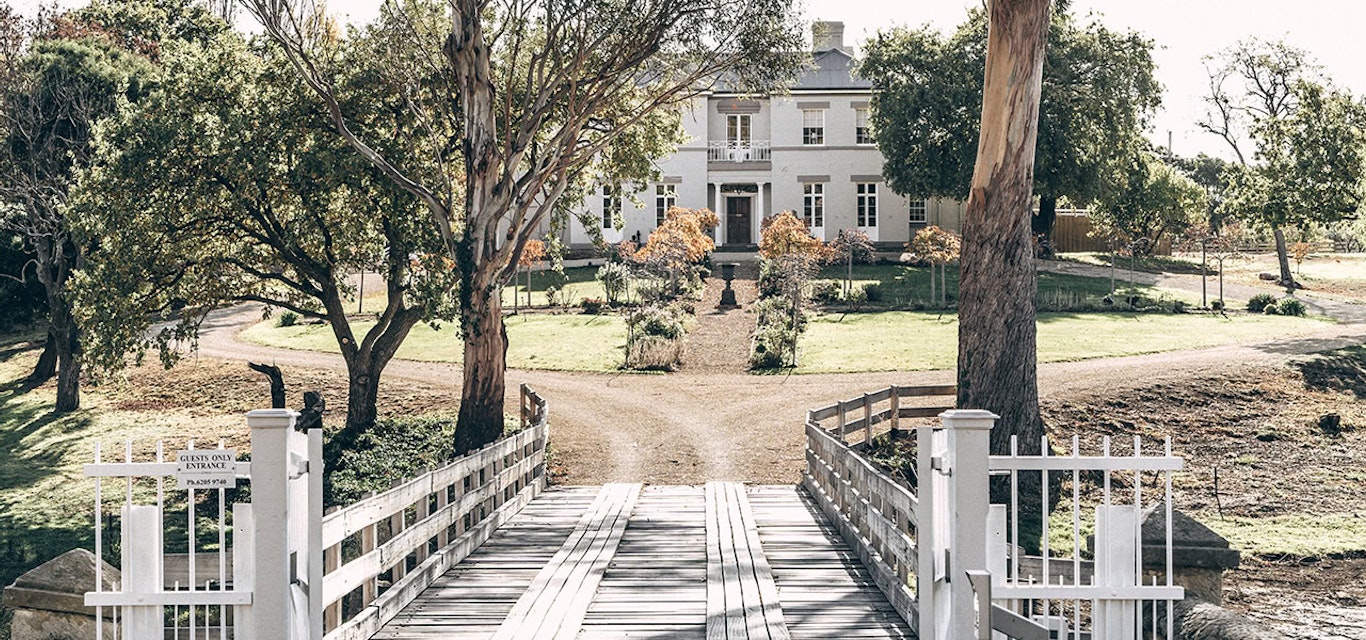No stone unturned
A couple of cannon balls found in the foundations, convict builders living in the cellar and hundreds of sandstone pieces re-puzzled by stonemasons. Stories that date back to the 1830s are part of the Prospect House Private Hotel restoration.
Prospect House Private Hotel sits with understated elegance in Richmond’s countryside. It does so thanks to the craftsmanship of 18 convicts who lived in the cellar’s cosy confines back in the 1830s. From their cellar base, a two-storey Georgian-style mansion took shape above. Nearly 200 years on, the historic property has been transformed into a 12-room luxe countryside hotel. Guest cars roll over a small bridge, almost a past-era threshold, to arrive at Prospect House.
The house began its life as a private residence for James Buscombe, a notable fellow who owned several houses as well as the post office, general store and what is now the Richmond Arms Hotel.
Indeed, there’s even a secret entrance to Buscombe’s study, where he conducted all his business affairs.
Across the years, this south-east Tasmanian icon remained a private home, operated as a restaurant under Graeme Phillips (a former Mercury food reviewer) and moved between ownership. However, its most significant evolution has been under current owners John and Libby Pooley, who own nearby Pooley Wines.
Determined to keep the property true to its original character, the Pooleys have invested $5 million since buying it in late 2017.
The restoration has not been without its challenges. The aforementioned entry bridge had completely collapsed and its Huon pine gates were hidden amongst tall-growing grass. The bridge and gate restoration included stately new sandstone pillars. Today the Pooleys’ entrance sets the scene for the all-inclusive experience ahead, complete with an open bar, onsite chef and weekend cooking classes.
The lush garden and re-established driveway paths are the product of a whopping 30 trucks of gravel. The former tennis court at the property’s southern end has now been transformed to a large lawn area and outdoor events space. There’s even outdoor chess for those with a penchant for making tactical moves between evening cocktails.
The Pooleys were determined to pay tribute to the property’s former grandeur and have gone to painstaking lengths to retain its character. Where the lower-level sandstone terrace fell away from the house, every piece of sandstone was collected and numbered. It would take two stonemasons six weeks to recreate the terrace with its hundreds of pieces. Every window in the main home was examined to ensure as many original windows as possible remained.
Transforming 12 rooms around the back courtyard and within the main house to a premium level was no easy task. Most rooms had been neglected for more than half a decade. Courtyard rooms were fashioned with uneven flooring and bathrooms graced with rotting wooden beams. The entire courtyard has been converted from a mud pit to a sandstone-paved meeting place, complete with inviting firepit.
As with any restoration, endearing discoveries were aplenty. Deep under the stable’s rubble, the original cobblestone floor was uncovered and now stands proud. Plenty of horse shoes were found on site, and a couple of token cannon balls were tucked away in the site’s foundations. A wooden door complete with matching wooden lock were found and restored, now taking pride of place in the cellar. Also deep below are the nails from which Graeme Phillips used to hang his game meats in the 1980s.
Positioned as a top-end stay, guests pay anywhere from $280 to $600 a night. Immersed in tales dating back to the 1830s, one may even meet the ghost of James Buscombe’s wife, said to still be roaming the hallways in search of lost jewels.
